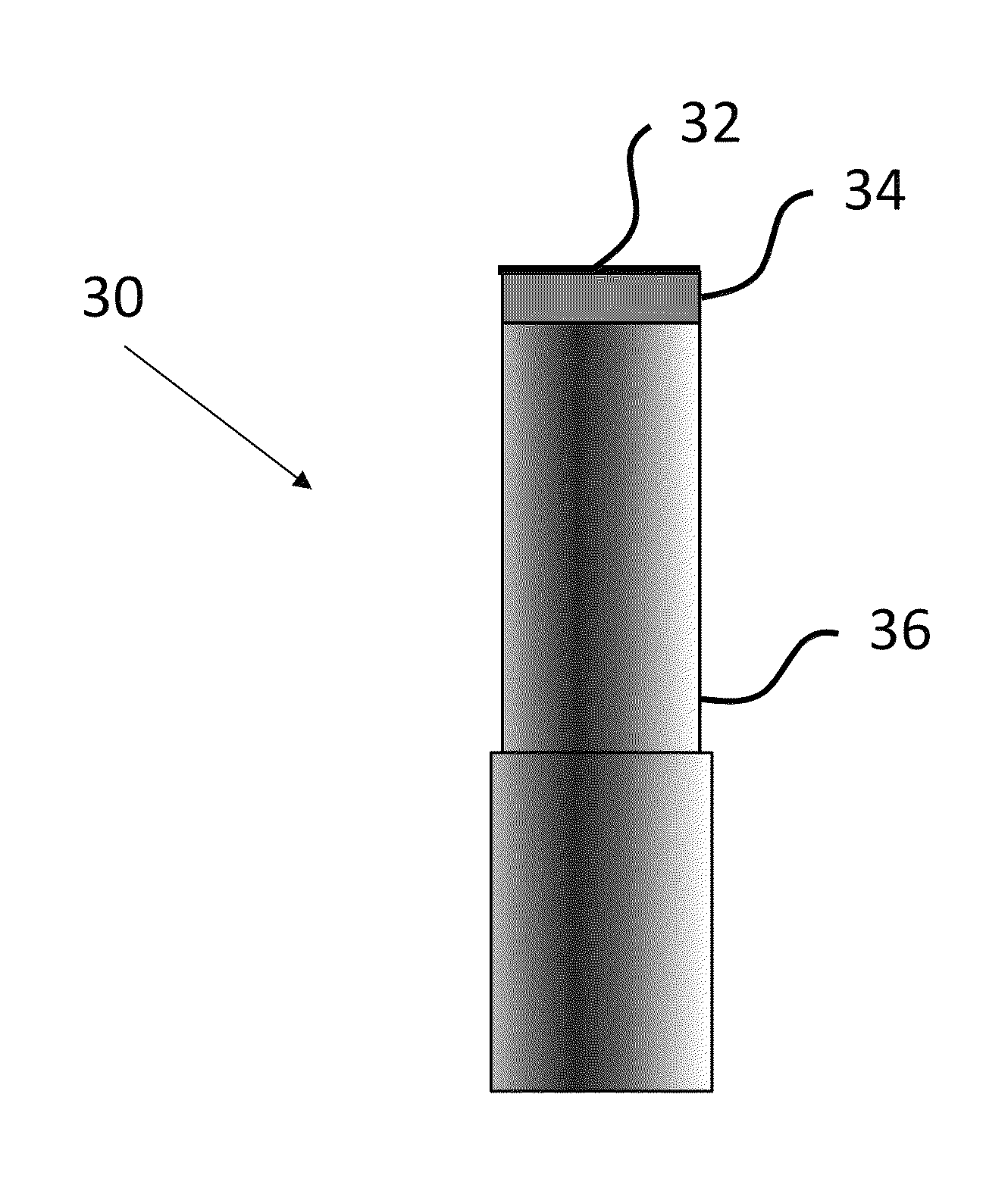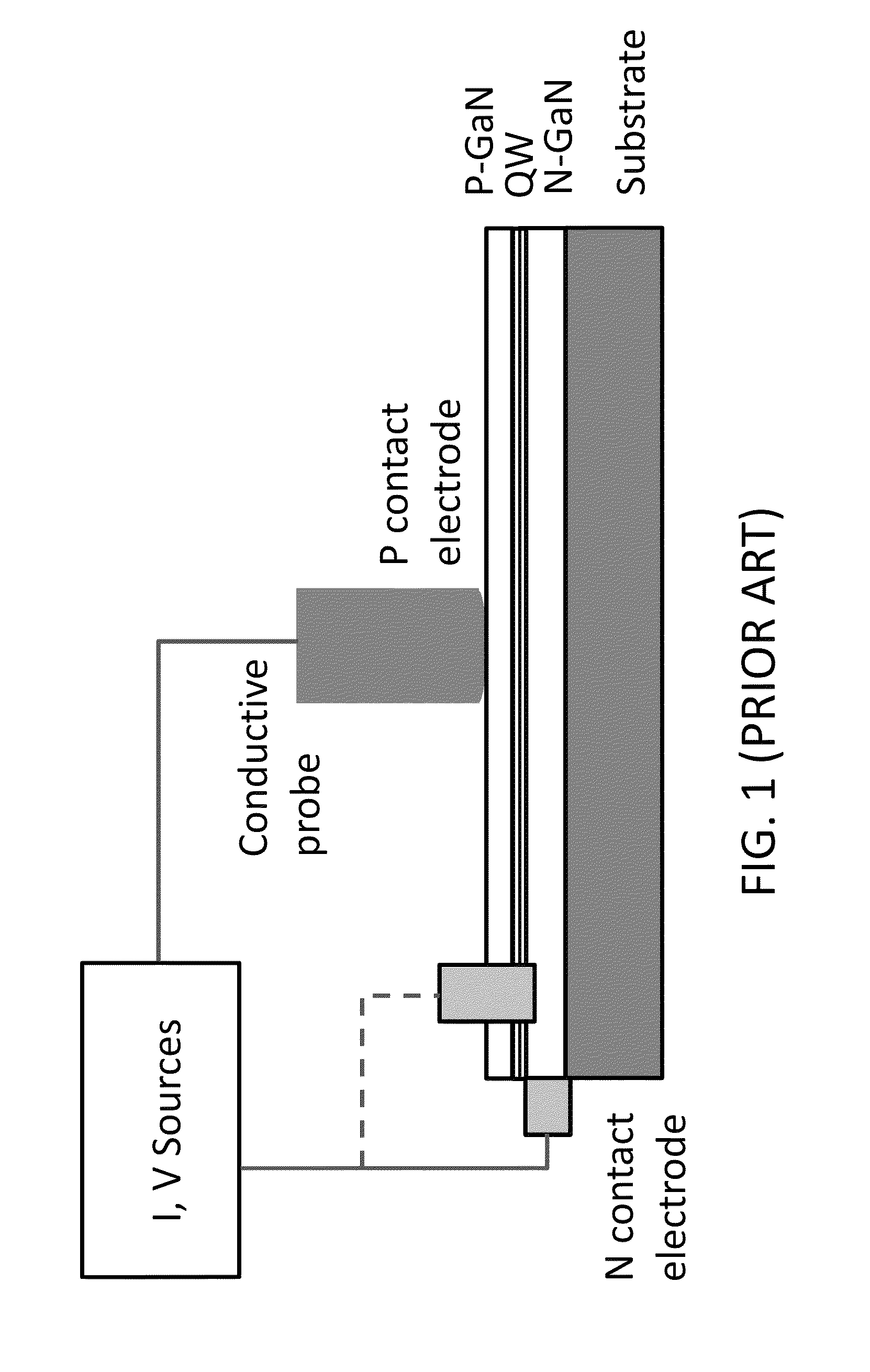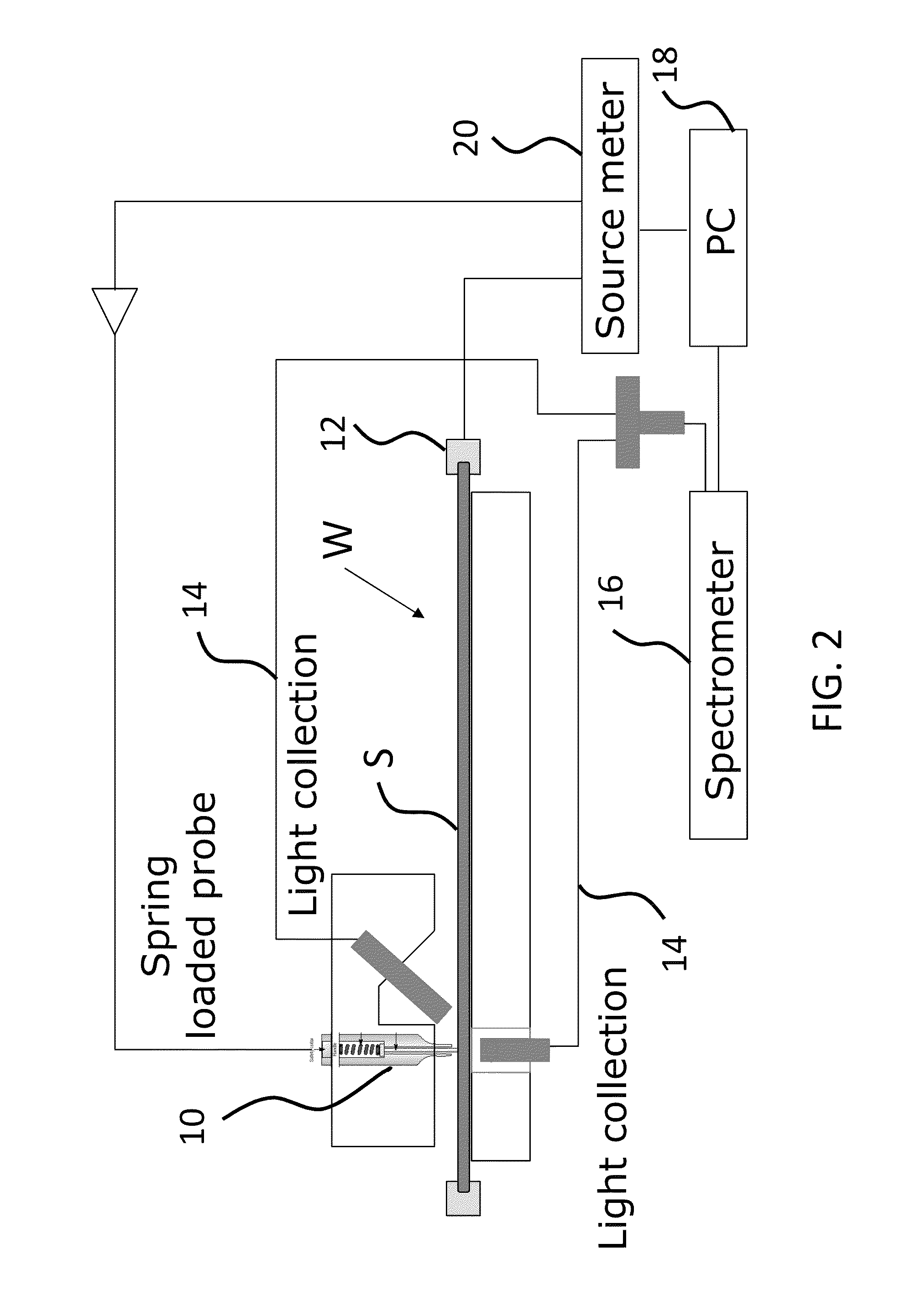Probe and method of manufacture for semiconductor wafer characterization
a technology of semiconductor wafers and manufacturing methods, applied in the field of semiconductor material testing, can solve the problems of poor, consistent probe-wafer contact with repetitive results, affecting conductivity and all related measurement parameters, and the surface of the wafer is typically not perfectly smooth, so as to improve the uniformity of contact with the wafer surface, and improve the spatial density of point contacts
- Summary
- Abstract
- Description
- Claims
- Application Information
AI Technical Summary
Benefits of technology
Problems solved by technology
Method used
Image
Examples
Embodiment Construction
[0030]The invention is a novel conductive probe for characterizing semiconductor materials, in particular electroluminescent (EL) semiconductor wafers in the course of manufacturing light-emitting devices (LEDs). As illustrated in the probe 30 of FIG. 3, the novelty lies in a thin layer 32 of preferably spherical metallic particles of sufficiently small size to ensure a high spatial density of point contacts when the probe engages the surface of the wafer under test. The layer 32 of metallic particles is attached to a thicker layer 34 of cured conductive elastomer, such as silicone, preferably by contacting the metal layer with uncured silicone and then curing it to produce adhesion. The conductive silicone layer 34 is itself similarly attached to a spring-loaded metal pin 36, thereby producing a spring-loaded probe with a metal tip capable of deformation to conform with very high degrees of uniformity and density of point contacts to irregularities in the surface of the wafer under...
PUM
 Login to View More
Login to View More Abstract
Description
Claims
Application Information
 Login to View More
Login to View More - R&D
- Intellectual Property
- Life Sciences
- Materials
- Tech Scout
- Unparalleled Data Quality
- Higher Quality Content
- 60% Fewer Hallucinations
Browse by: Latest US Patents, China's latest patents, Technical Efficacy Thesaurus, Application Domain, Technology Topic, Popular Technical Reports.
© 2025 PatSnap. All rights reserved.Legal|Privacy policy|Modern Slavery Act Transparency Statement|Sitemap|About US| Contact US: help@patsnap.com



